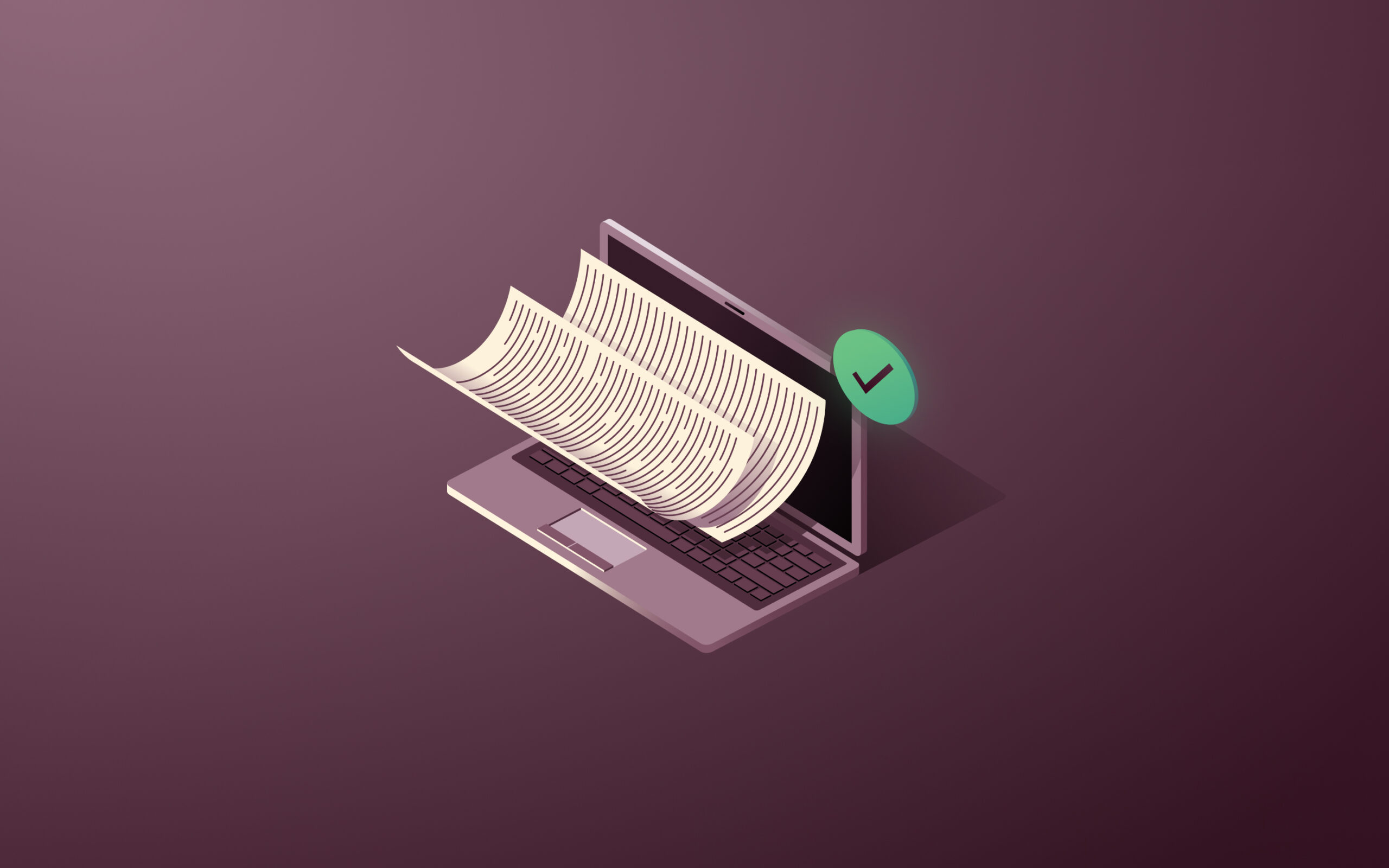New hire checklist: A step-by-step guide to onboarding employees in Australia
In this article
Once you hire a new employee in Australia, you need to onboard them. The formalities of this process—supplying the necessary paperwork, gathering tax information, and setting up their email account—are important. But it’s just as crucial to make them feel comfortable in their new work environment.
A stellar onboarding process can help a supported employee do their best work. It can also save your human resources department from major headaches. According to research from MYOB, a business management platform, 71% of Australians would consider leaving a business if they had a lousy onboarding experience. And according to HR Expert Australia, over one-fifth of employee turnover happens within a new hire’s first 45 days.
So, how do you lay the groundwork for a fulfilling relationship with your new hire? Our onboarding checklist covers what you need to know—from paperwork and compliance to devices, access to apps, training, and a 90-day plan to ensure your new employees are successful well beyond their first day.
Before their first day
Find the relevant award category. Australia has more than 100 'Modern Awards,' that set different minimum work conditions depending on an employee’s industry and job category. The Fair Work Ombudsman has an online tool that guides employers to the award to use for their new hire. A Pay and Conditions Tool also ensures you comply with minimum wage requirements specific to the award.
Ensure the employee can legally work in Australia. If your new hire isn’t an Australian citizen or permanent resident, they need a work visa. The Department of Home Affairs administers several types of visas. To see if the prospective employee has the one they need, you can run a Visa Entitlement Verification Online (otherwise known as a VEVO Check). Read our guide on work permits in Australia for more information.
Complete a background check. Background checks are legal in Australia if you get informed consent from job applicants first. Employers are also responsible for protecting the new hire’s personal information and maintaining their confidentiality. Read our complete guide to employment background checks in Australia to learn more.
Send an offer letter. An offer letter, also known as an employment contract, is a legal agreement between a new hire and their employer. Make sure it includes the correct information to comply with Australian labour laws: the new hire’s position and contact information, working days and hours, compensation and minimum entitlements, your termination policy (including details on probation periods), and any other stipulations relevant to your company. Read our complete guide on creating offer letters for employees in Australia.
Provide a Fair Work Information Statement. Employers must give all employees this document, which outlines their minimum employment conditions and entitlements under the National Employment Standards (NES).
File other necessary paperwork. In addition to the employment agreement and Fair Work Information Statement, common forms include a superannuation guarantee, tax documents, legal agreements, non-disclosure agreements, and information on workplace health and safety and emergency procedures. Depending on your onboarding software, setting up these documents might involve multiple email chains with stakeholders and signatories across the organisation.
Prepare for tax withholdings. You’ll need to make tax payments on your new employee’s behalf through a process known as pay-as-you-go (PAYG) withholding. Make sure you’re registered for this with the Australian Taxation Office (ATO), and that you have the new hire’s Tax File Number (TFN). Australian businesses offering supplemental employee perks may need to pay a fringe benefits tax. Some small businesses that pay out more than a certain wage threshold (it varies by state and territory) need to pay a regional payroll tax.
Know the fund for their super guarantee. You must make superannuation contributions to a fund of the employee’s choice, so ensure they have a superannuation standard choice form four weeks before their start date. You also need to set up a default fund if the new hire decides not to choose their own.
Enroll them in benefits. In addition to superannuation, worker’s compensation, annual leave, sick leave, and parental leave are all mandatory benefits in Australia. The exact entitlements may vary by award and state or territory (find the breakdown in our guide to employee benefits in Australia).
Add them to payroll. You have to pay Australia-based employees in Australian dollars (AUD) unless you’ve specifically obtained their written permission to pay them in a different currency. You also need to report payroll information to the ATO through its Single Touch Payroll (STP) system, so make sure you’re properly enrolled. Check out our full guide to running payroll for employees in Australia.
Order and configure their devices. Whether they’re working on-site or remotely, your new hire needs the right tools to do their job. To help them hit the ground running, be sure to order and configure any devices they need before their first day.
Set up their app accounts. There are so many apps to keep track of, from Email to Slack, Zoom, Figma, and more. Your new hire shouldn’t be worried about gaining access to the tools they need as they’re just getting started. Set up their app accounts ahead of their first day so everything is ready for a smooth (and fast) sign-in.
Prepare any resources they'll need. These can include:
A copy of your onboarding checklist
An employee handbook
Your company's mission statement, policies, and values
A list of team members
An overview of their first day
Their job description and top priorities
Any other role-specific resources they may need
Schedule their orientation. Be sure to schedule orientation events for your new hire in advance. This can include a 1:1 with their manager, any meetings with their team, or even a team outing for their first day–lunch is a great option! Notify everyone in advance, so they can make it.
Send a welcome email. Create a welcome email with all the details about what your new hire can expect on their first day. This can include a first-day agenda, notes on office policies, FAQs about their first day, and anything else they might need to feel comfortable.
On Day 1
Make sure their workspace is ready. If your new hire works in the office, make sure their desk is set up with everything they need. You can consider customising their workspace with a nameplate and greeting them with a decorative welcome gift for their first day to make a good first impression.
Send a 'welcome to the team' email. It's a good idea to send an email out to your company introducing the new hire, providing a brief bio and job description, and encouraging colleagues to pop over and say hi. This can give your new employee an early glimpse of the company culture they can expect. Learn how to write the perfect welcome to the team email with our guide.
Give them an agenda to help them get started. It’s hard for new hires to grasp their first-day responsibilities without an agenda. Whether it’s over email or in person, give them a game plan for what to expect during their first few days on the job, including meetings, assignments, and other responsibilities.
Schedule a 1:1 with their manager. Your new hire’s supervisor will be an important sounding board throughout their course of employment. Kick the relationship off right by scheduling an initial meeting to address any questions. Ensure the new employee feels comfortable giving and receiving feedback, as this two-way exchange is encouraged in most Australian workplaces.
Schedule a meeting with their onboarding buddy or mentor. Asking a welcoming colleague to guide your new hire through their onboarding process is a good practice. Set aside time for this interaction. It doesn't have to be formal—something as simple as grabbing a flat white at a nearby coffee shop can make it a pleasant experience.
Have a get-to-know-you event with their team or closest peers. Whether in or out of the office (or virtually), a meet-and-greet with all members of the new hire’s team breaks the ice, while ensuring the new employee knows who they’ll be working with and how to access them.
Give an office tour. If your new hire works in person, walk them around their new office right after they get settled at their desk. Show them the bathrooms, kitchen, and storage rooms, and give them a general sense of where to find colleagues they may need to interact with. This is also a good time to briefly introduce them to any co-workers.
Provide them with a list of contacts. Before the day’s end, share a 'cheat sheet' of the company, including names, job titles, and contact information across all platforms, to make sure your new hire knows who to go to for specific questions.
During their first 90 days
Schedule organisational and role-specific training. Your new hire's goal in their first months should be to learn about your company and their role within it. Within their first week, start them off with organisational training, where they learn about the company, its goals, purpose, and values. Then, pivot to role-specific training to help them learn specific skills and information needed to succeed. The Australian government provides a range of support programs to help fund specific skills training, including job readiness and new enterprise incentives.
Assign work and help them set goals. New hires absorb a lot of information during their first few months on the job, so it’s no surprise that their work product won’t be perfect immediately. When assigning work, start them off slowly and encourage them to ask questions when needed. Consider setting realistic goals with them that, if met, will allow you to entrust them with more responsibility.
Schedule check-ins and mentorship to help them stay on track. Check-ins with a new hire help you track progress. They’re also the perfect space to review and re-assess goals. No matter how frequent these meetings are, aim to schedule them regularly to ensure consistency.
Offer regular feedback as they get settled in. Regular feedback is crucial to ensuring your new hire stays on track with their goals.
Seek their feedback on how you can improve the onboarding experience. Feedback is a two-way street. Make sure your new hire feels empowered to speak their mind about company processes.
Onboarding new employees in Australia is easy—and fast—with Rippling
If you're going to hire employees, contractors, or remote workers in Australia, you need more than just a new hire checklist: you need Rippling.
Rippling makes it easy to onboard and manage employees and contractors around the world—in one system that helps you comply with local employment laws and regulations.
And with Rippling, onboarding new employees is a breeze. Complete and verify background checks, write and send offer letters, and send, sign, and store digital documents—all from one centralised location.
Disclaimer
Rippling and its affiliates do not provide tax, accounting, or legal advice. This material has been prepared for informational purposes only, and is not intended to provide or be relied on for tax, accounting, or legal advice. You should consult your own tax, accounting and legal advisers before engaging in any related activities or transactions.
Author
Jackson Knapp
Jackson is a writer and editor from DC, based in LA.
Explore more
See Rippling in action
Increase savings, automate busy work, and make better decisions by managing HR, IT and Finance in one place.

























































































